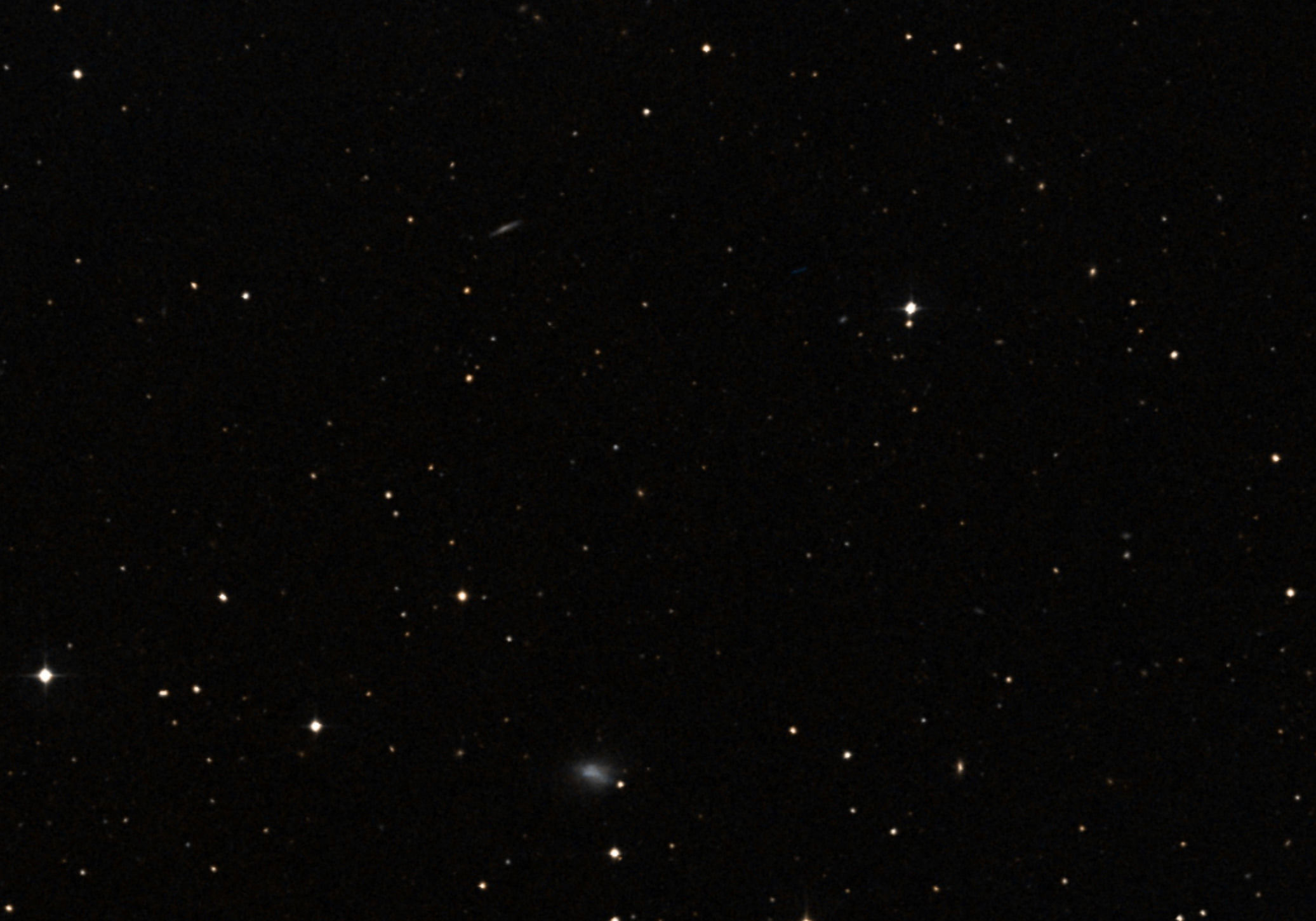Create a free profile to get unlimited access to exclusive videos, sweepstakes, and more!
Where did this tiny ghostly galaxy Segue-1 come from?

In astronomy, as in life, it can be easy to classify things into one box or another. There are obvious characteristics to many things that allow this; for example, in biology you can classify animals by how many legs they have, or whether they're warm-blooded or cold.
But the more things you find and classify, the more likely it is you'll find things that don't want to fit into one box or another. They have characteristics of both, or neither, making it hard to figure out which classification they should be… or if they deserve their own.
Speaking of which, meet Segue-1.
See it? Yeah, you don't. It's centered in the image on the left and a deeper image on the right shows it better, for a sufficiently broad interpretation of the word "better". Those stars you see? Yeah. That's it.
Segue-1 (the first galaxy discovered as part of a survey called the Sloan Extension for Galactic Understanding and Exploration) is an ultra-faint dwarf galaxy. It's actually pretty close to us, only about 75,000 light years away. That's well within the sphere of influence of the Milky Way galaxy, making it a companion to us.
But even though it's so close to us it's so small and faint that it wasn't discovered until 2007, and even then its classification was uncertain. It's only a few hundred light years in size and has a mass less than a million times the Sun's, which are both smaller than even most dwarf galaxies. That's really more like a globular cluster, a self-contained cluster of stars; there are something like 160 known globulars orbiting the Milky Way, most closer than 75,000 light years but several farther.
Big globulars can look like very small galaxies, but it's not just an arbitrary distinction. They form differently and evolve differently, and generally you can tell the difference just by looking at them. But Segue-1 falls right on the line between them. The key factor came when astronomers picked out individual stars in Segue-1 and looked at them using a spectrometer, breaking the light up into individual colors and measuring the amounts of different elements in the stars. The amount of iron in globular cluster stars is about the same from star to star, but very different in galaxies.
Segue-1's stars had a significant spread in iron abundances. Hurray! It's a galaxy!
But… what's it doing there?
That's a good question. Did it form in situ, orbiting the Milky Way, or was it a satellite of another (smaller than the Milky Way but bigger than Segue-1) galaxy that got stripped away by our much fiercer gravity? And for that matter, is it even orbiting us at all or just passing by?
A team of astronomers looked at data measuring the positions of the stars over a ten-year baseline to very carefully measure their motion. What they found is that the velocities of the stars indicate that Segue-1 is indeed orbiting the Milky Way and not just passing through our volume of space. Although it's hard to be super-accurate, they found the orbit is elliptical, taking it as close as 50,000 and out to about 110,000 light years from the center of the Milky Way — I'll note these numbers depend on the Milky Way's mass, which isn't nailed down as well as it needs to be to get solid numbers for Segue-1's orbit; consider these to be likely distances but not perfectly known.
Given all that, its orbit likely takes about 700 million years to complete (for comparison, the Sun, which orbits well inside the Milky Way, takes roughly 240 million years to circle the galaxy once).
To find out if Segue-1 formed with us or was stripped from another galaxy, the astronomers did some simulation runs on the orbit to see if it has always been on its current orbit or if things have changed over the lifespan of the Universe.
Maddeningly, they couldn't quite distinguish the two scenarios. The simulations don't really say for sure if Segue-1 was a companion to some other galaxy the Milky Way ate or if it formed out there all alone. The authors note that there are no known galaxies with similar orbits, so if it did start out as a companion to another dwarf, the Milky Way ate it a long time ago. They run through some subtle arguments to try to figure this out, and while the evidence is circumstantial, they argue that it's more likely Segue-1 formed as is and has been orbiting us for more than 8 billion years. But they can't say for sure.
To be honest, not knowing how it formed is rather fun to me. That means there's a mystery left to solve, and we'll have to be clever to solve it.
But there's a bigger picture here. The Milky Way is a big galaxy, with a flat disk 100,000 light years across and a halo of stars and dark matter that stretches much farther. It's our home, and we do know quite a bit about it.
But not everything. There are objects out there that are so faint they're hard to study well, and so faint we didn't even know they existed until pretty recently. Measuring their motions means waiting long enough for that motion to make itself clear, and that takes time too, so we're really only just starting to get a grip on these wee beasties. A few more galaxies like Segue-1 have been found in the meantime, too, which is helpful. Maybe as bigger telescopes come online we'll be able to probe deeper into these tiny galaxies and learn more about them, which in turn will illuminate our own galaxy's history as well.
I hope so. I do like mysteries, but I also like answers. There'll always be more mysteries.















